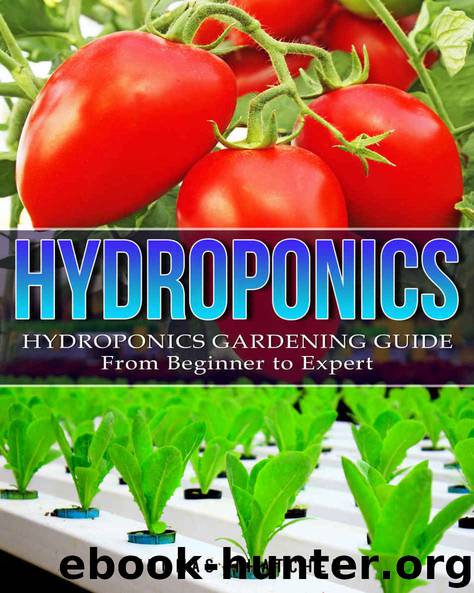Hydroponics: Hydroponics Gardening Guide - from Beginner to Expert (Hydroponics, Aquaponics, self sufficiency, homesteading, Gardening, horticulture, Cannabis) by Thatcher Thomas

Author:Thatcher, Thomas [Thatcher, Thomas]
Language: eng
Format: epub
Published: 2016-01-31T08:00:00+00:00
Rock Wool:
Suitable for both ebb and flow and for continuous drip systems rock wool is a versatile growing medium. It retains water well and its porous texture means that it facilitates the free flow of air. It is made from a type of rock that is melted and then spun to produce a material similar to foam. Two factors do need to be borne in mind when choosing this material for your growing medium. Initially it must be soaked overnight to ensure the Ph is neutral and secondly it does not break down so disposal can be a problem.
Oasis cubes:
This lightweight foam has been used by the florist industry for decades and is ideal for the small scale hydroponic producer. It can hold up to forty times its own weight in water and still remain breathable. It is ideal for starting both seeds and cuttings and is very wickable making it a good product for the simple wick system. These properties can be used in any of the six main growing systems and the Ph is neutral.
Other options:
So long as the growing medium contains no nutrients and is free draining there are plenty of products that are not related to the horticultural industry that serve well in the hydroponic world and you are free to think out of the box and experiment with whatever ingredients you find that may fit the bill. Those light weight packaging peanuts you had sitting around in the garage with no real use for, are one example. Builder’s sand was used widely in the early days of hydroponics. It needs to be rinsed to leach out any chemicals and it has a low water retention capacity but it does work. Be careful though because it tends to pack down when it has been wet a few times and then drainage will deteriorate.
Gravel is another cheap and easy to find material. It offers no water retention but sometimes both of these qualities might prove desirable. In Australia sawdust is often used for large scale tomato growing because it retains moisture and is often free. If you decide to experiment with this material make sure it has not been polluted with any products whilst still at the sawmill. They could damage your plants. It does tend to break down but as it is usually free it is easily replaced.
Rice hulls are a bi product of rice farming. They are as effective as perlite though they do decompose so will have a limited life span. As it is usually cheap or free this may not be an issue and regular replacement is recommended as there tends to be a buildup of salts that are detrimental to plant growth.
What I hope I have demonstrated is that there is no specific product you have to use provided it is Ph neutral and drains well. I have heard of instances of people using torn up cardboard, broken brick and tiles and even the stuffing out of an old mattress. Feel free to experiment with whatever comes to hand.
Download
This site does not store any files on its server. We only index and link to content provided by other sites. Please contact the content providers to delete copyright contents if any and email us, we'll remove relevant links or contents immediately.
Turbulence by E. J. Noyes(7717)
The Thirst by Nesbo Jo(6447)
Gerald's Game by Stephen King(4383)
Be in a Treehouse by Pete Nelson(3654)
Marijuana Grower's Handbook by Ed Rosenthal(3519)
The Sprouting Book by Ann Wigmore(3419)
The Red Files by Lee Winter(3284)
The Remains of the Day by Kazuo Ishiguro(3146)
Sharp Objects: A Novel by Gillian Flynn(2851)
Christian (The Protectors Book 1) by L. Ann Marie(2607)
Organic Mushroom Farming and Mycoremediation by Tradd Cotter(2571)
The Culinary Herbal by Susan Belsinger(2342)
Stone Building by Kevin Gardner(2297)
Lilac Girls by Martha Hall Kelly(2204)
The Starter Garden Handbook by Alice Mary Alvrez(2202)
The Unlikely Pilgrimage of Harold Fry by Rachel Joyce(2139)
The Lean Farm Guide to Growing Vegetables: More In-Depth Lean Techniques for Efficient Organic Production by Ben Hartman(2014)
Urban Farming by Thomas Fox(1987)
Backyard Woodland by Josh VanBrakle(1835)
